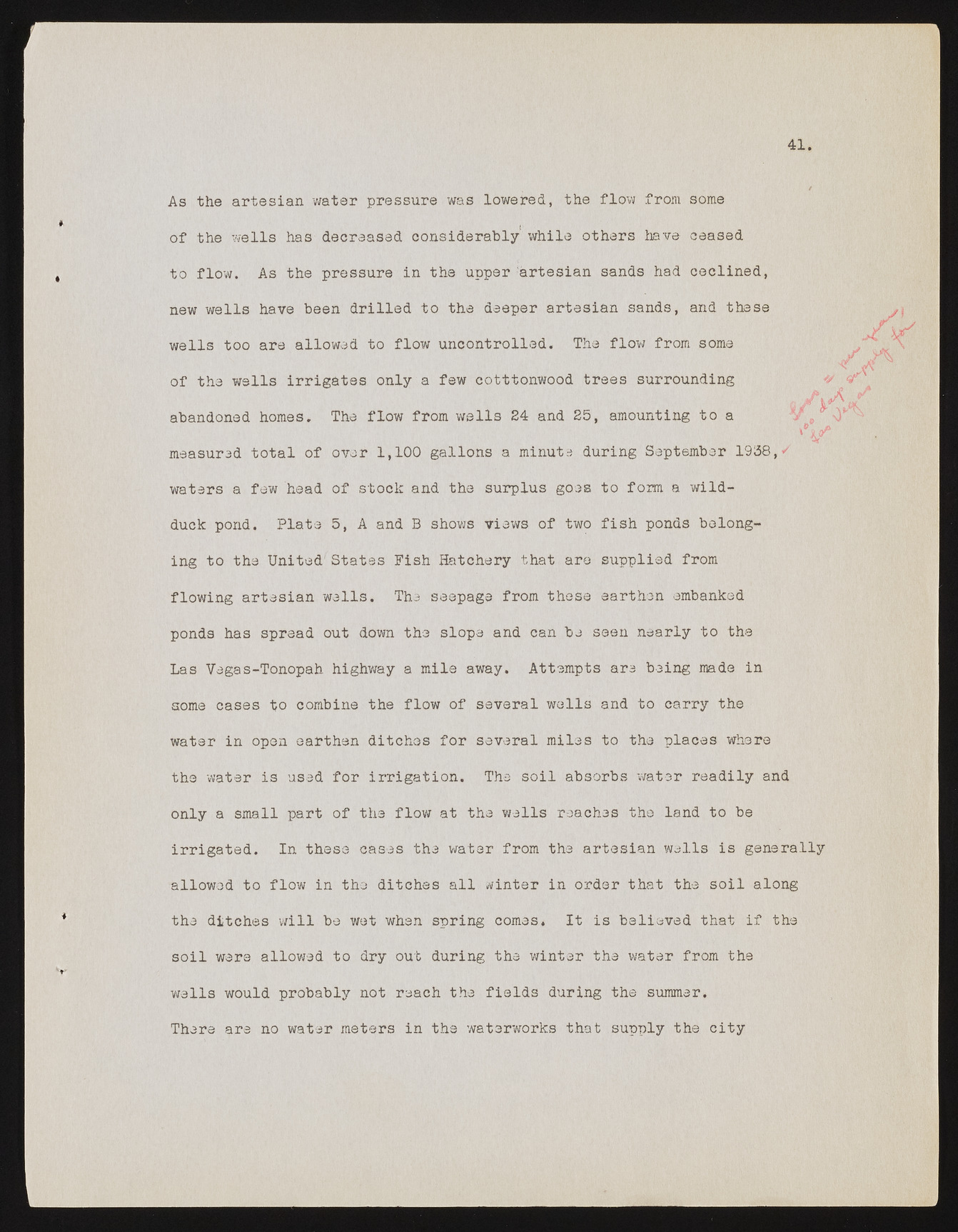Copyright & Fair-use Agreement
UNLV Special Collections provides copies of materials to facilitate private study, scholarship, or research. Material not in the public domain may be used according to fair use of copyrighted materials as defined by copyright law. Please cite us.
Please note that UNLV may not own the copyright to these materials and cannot provide permission to publish or distribute materials when UNLV is not the copyright holder. The user is solely responsible for determining the copyright status of materials and obtaining permission to use material from the copyright holder and for determining whether any permissions relating to any other rights are necessary for the intended use, and for obtaining all required permissions beyond that allowed by fair use.
Read more about our reproduction and use policy.
I agree.Information
Digital ID
Permalink
Details
Member of
More Info
Rights
Digital Provenance
Publisher
Transcription
%fV JO * measured total of over 1,100 gallons a minute during September 1938,^ waters a few head of stock and the surplus goes to form a wild- duck pond. Plate 5, A and B shows views of two fish ponds belonging to the United States Fish Hatchery that are supplied from flowing artesian wells. The seepage from these earthen embanked ponds has spread out down the slope and can be seen nearly to the Las Yegas-Tonopah highway a mile away. Attempts are being made in some cases to combine the flow of several wells and to carry the water in open earthen ditches for several miles to the places where the water is used for irrigation. The soil absorbs water readily and only a small part of the flow at the wells reaches the land to be irrigated. In these cases the water from the artesian wells is generally allowed to flow in the ditches all winter in order that the soil along the ditches will be wet when spring comes. It is believed that if the soil were allowed to dry out during the winter the water from the wells would probably not reach the fields during the summer. There are no water meters in the waterworks that supply the city As the artesian -water pressure was lowered, the flow from some of the wells has decreased considerably while others have ceased to flow. As the pressure in the upper artesian sands had ceclined, new wells have been drilled to the deeper artesian sands, and these wells too are allowed to flow uncontrolled. The flow from some of the wells irrigates only a few cotttonwood trees surrounding abandoned homes. The flow from wells 24 and 25, amounting to a

